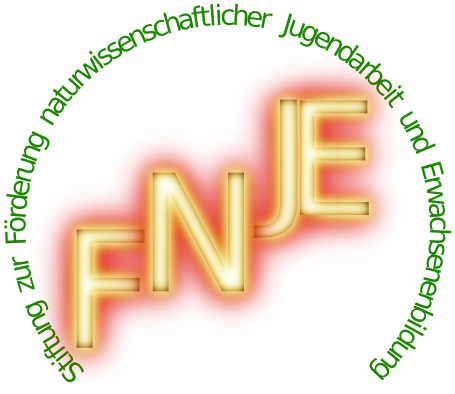KASKAL.UTU: Difference between revisions
DavidHilder (talk | contribs) No edit summary |
No edit summary |
||
| Line 1: | Line 1: | ||
<sup>mul</sup>KASKAL.UTU (𒀯𒆜𒌓) |
<sup>mul</sup>KASKAL.UTU (𒀯𒆜𒌓) = ''harran šamaš'', (the star of) The Path of the Sun. |
||
MUL.APIN II i 1-6 explains that the Path of the Moon is the path that the Sun and five other ancient planets move along, equating this path in modern astronomical terms with the ecliptic ), while the Path of the Sun encompasses the three stellar Paths of Anu, Enlil, and Ea in an obscure passage in Enuma Anu Enlil (Horowitz 2011: 255-258). In the Gilgamesh Epic, Gilgamesh travels along a Path of the Sun leading from Mount Mašu (the Twin) through a region of darkness to a grove of jewel-bearing trees (George 2003: 670-675, Horowitz 2011: 98-102. For a syllabic rendering of the Akkadian with the name of the Sun in status absolutus see SAA 8 49 rev. 4: har-ra-na <sup>d</sup>ša<sub>2</sub>-maš. |
|||
==Dictionary== |
==Dictionary== |
||
===Kurtik with Hilder, Hoffmann, Horowitz, Kim=== |
===Kurtik with Hilder, Hoffmann, Horowitz, Kim=== |
||
Lit. "(Star) of the |
Lit. "(Star) of the Path (or in the Path) of the Sun"; examples are available for Jupiter and Saturn, but ultimately could include any asterism in the ecliptic, particular the other planets. |
||
{| class="wikitable" |
{| class="wikitable" |
||
|+ |
|+ |
||
| Line 27: | Line 34: | ||
(2) = Saturn; see (Kurtik a43) [[APIN]], VI 7, (Kurtik u11) [[UGA]], VI 14. |
(2) = Saturn; see (Kurtik a43) [[APIN]], VI 7, (Kurtik u11) [[UGA]], VI 14. |
||
KASKAL <sup>d</sup>UTU as a landmark determining the position of the planets in the sky, see MUL.APIN II i |
KASKAL <sup>d</sup>UTU as a landmark determining the position of the planets in the sky, see MUL.APIN II i 50 ff. [MA, 83-84]. |
||
See also (Kurtik u11) [[UGA|UGA<sup>mušen</sup>]], I. |
See also (Kurtik u11) [[UGA|UGA<sup>mušen</sup>]], I. |
||
Revision as of 09:03, 3 July 2025
mulKASKAL.UTU (𒀯𒆜𒌓) = harran šamaš, (the star of) The Path of the Sun.
MUL.APIN II i 1-6 explains that the Path of the Moon is the path that the Sun and five other ancient planets move along, equating this path in modern astronomical terms with the ecliptic ), while the Path of the Sun encompasses the three stellar Paths of Anu, Enlil, and Ea in an obscure passage in Enuma Anu Enlil (Horowitz 2011: 255-258). In the Gilgamesh Epic, Gilgamesh travels along a Path of the Sun leading from Mount Mašu (the Twin) through a region of darkness to a grove of jewel-bearing trees (George 2003: 670-675, Horowitz 2011: 98-102. For a syllabic rendering of the Akkadian with the name of the Sun in status absolutus see SAA 8 49 rev. 4: har-ra-na dša2-maš.
Dictionary
Kurtik with Hilder, Hoffmann, Horowitz, Kim
Lit. "(Star) of the Path (or in the Path) of the Sun"; examples are available for Jupiter and Saturn, but ultimately could include any asterism in the ecliptic, particular the other planets.
| Sources | Identifications |
|---|---|
| EAE.
See. [ACh Suppl., 49:9, 50:28, 55:27; Borger 1973, LB 1321 r. 18′, 23′, 28′]. |
|
| "Reports."
See. [ARAK, 49 r. 4-6]. |
|
| Late astrology.
See. [SpTU I, 84:16], see (Kurtik g12) GI6. |
Additional
II. Identifications.
(1) = Jupiter; see (Kurtik u11) UGA, VI 14, (Kurtik u31) UZ3, VI 1.
(2) = Saturn; see (Kurtik a43) mulAPIN, VI 7, (Kurtik u11) UGA, VI 14.
KASKAL dUTU as a landmark determining the position of the planets in the sky, see MUL.APIN II i 50 ff. [MA, 83-84].
See also (Kurtik u11) UGAmušen, I.
Historical Dictionaries
| Kurtik (2022) | Gössmann (1950) |
|---|---|
| букв. «(Звезда) пути (или на пути) Солнца»; название Юпитера или Сатурна.
I. Источники. EAE. См. [ACh Suppl., 49:9, 50:28, 55:27; Borger 1973, LB 1321 r. 18′, 23′, 28′]. «Рапорты». См. [ARAK, 49 r. 4–6]. Поздняя астрология. См. [SpTU I, 84:16], см. g12GI6. II. Отождествления. (1) = Юпитер; см. u11UGA, VI 14, u31UZ3, VI 1. (2) = Сатурн; см. a43APIN, VI 7, u11UGA, VI 14. KASKAL dUTU как ориентир, определяющий положение планет на небе, см. MUL.APIN II i 51 ff. [MA, 83–84]. См. также u11UGAmušen, I. |
Example |




